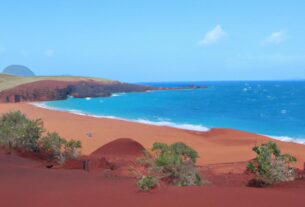If you’re a fan of literature and adventure, you might have come across the name “Monte Cristo.” It’s the title of a famous novel by Alexandre Dumas, which tells the story of a man seeking revenge after being wrongfully imprisoned. But you might be wondering, is Monte Cristo a real place?
This question has puzzled many readers and travelers alike. Some believe that Monte Cristo is a real island, while others think it’s just a fictional creation. In this article, we’ll explore the history, geography, and mythology of Monte Cristo to find out the truth.
But why is it important to know if Monte Cristo is real or not? For one, it can help you plan your next travel destination. If Monte Cristo does exist, you might want to add it to your bucket list. Additionally, understanding the origins and influence of the myth can deepen your appreciation for the literary masterpiece that inspired it. So, let’s dive in and uncover the mystery of Monte Cristo.
The History of Monte Cristo
The Origin of the Name “Monte Cristo”
The name “Monte Cristo” has its origins in the Italian language, and it translates to “Mount of Christ” in English. It’s believed that the name was given to the island by Italian sailors who were familiar with the area.
Historical References to Monte Cristo
There is evidence to suggest that Monte Cristo has been inhabited since ancient times. The island was used as a quarry during the Roman era, and it was also a strategic location during the Middle Ages.
In the 16th century, Monte Cristo became a haven for pirates who used it as a base for their operations. The island was also fought over by various European powers, including France and Spain.
The Role of Monte Cristo in Literature and Pop Culture
The story of Monte Cristo has captured the imaginations of readers and filmmakers for centuries. Alexandre Dumas’ novel, “The Count of Monte Cristo,” is a literary classic that tells the tale of a man who is wrongly imprisoned and seeks revenge on those who betrayed him.
The novel has been adapted into numerous films, TV shows, and stage productions. It has also inspired other works of literature, such as Jules Verne’s “The Mysterious Island.”
Monte Cristo has also been referenced in popular culture, from songs to video games. The island’s reputation as a place of mystery and intrigue has made it a fascinating subject for artists and storytellers alike.
The Geography of Monte Cristo
Location of Monte Cristo
The first step in determining whether Monte Cristo is a real place is to identify its location. Monte Cristo is a small island located in the Tyrrhenian Sea, between Corsica and Italy. It’s part of the Tuscan Archipelago National Park and is known for its rugged terrain and beautiful coastline.
Physical Characteristics of Monte Cristo
Monte Cristo covers an area of approximately 10 square kilometers and is characterized by its jagged coastline, rocky cliffs, and rolling hills. The highest point on the island is the Monte Cristo peak, which stands at 645 meters above sea level. The island is largely uninhabited, with only a handful of people residing there for research and conservation purposes.
Climate and Weather Patterns in Monte Cristo
Monte Cristo has a Mediterranean climate, which means it experiences hot and dry summers and mild winters. The island receives an average of 600mm of rainfall per year, with most of it occurring in the autumn and winter months. Due to its location, Monte Cristo is prone to strong winds and storms, which can make it difficult to access by sea.
Understanding the geography of Monte Cristo can help us appreciate the island’s beauty and understand its potential challenges for visitors. In the next section, we’ll explore the myth of Monte Cristo and its impact on popular culture.
The Myth of Monte Cristo
When people hear the name “Monte Cristo,” they often think of the classic novel. However, the legend of Monte Cristo extends beyond the pages of Dumas’ work. The story of a man seeking revenge against his enemies has captured the imagination of people around the world, inspiring countless adaptations and reimaginings.
One of the most significant impacts of the Monte Cristo myth is its influence on popular culture. From movies to TV shows to video games, the story has been adapted and retold in a variety of mediums. Each version of the tale adds its own spin, but the core themes of betrayal, vengeance, and redemption remain the same.
But the Monte Cristo myth isn’t just a source of entertainment. It also has a significant impact on tourism and local economies. Many places around the world have capitalized on the legend by promoting themselves as the “real” Monte Cristo. For example, there’s an island in Italy called Montecristo that attracts tourists who are drawn to the connection with the novel. Similarly, the Chateau d’If, a fortress in France where the protagonist is imprisoned, has become a popular tourist destination.
However, the commercialization of the Monte Cristo myth has also led to some controversy. Some people argue that it’s disrespectful to turn a tragic story of injustice into a tourist attraction. Others criticize the way that the myth has been distorted and simplified in the popular imagination.
Despite these debates, there’s no denying that the Monte Cristo myth has had a lasting impact on our culture. It’s a testament to the power of storytelling and the human desire for justice and redemption.
The Reality of Monte Cristo
After exploring the history and mythology of Monte Cristo, let’s take a closer look at the reality of this place. Is it a real island with a thriving community, or just a figment of our imagination?
The Current State of Monte Cristo
First off, it’s important to note that Monte Cristo does exist, but it might not be what you expect. Rather than a tropical paradise or a rugged wilderness, Monte Cristo is a small and uninhabited island off the coast of Italy. It is part of the Tuscan Archipelago National Park and is considered a protected area due to its unique flora and fauna.
The Population and Demographics of Monte Cristo
As mentioned, Monte Cristo is uninhabited, meaning there is no permanent population living on the island. However, there have been temporary settlements in the past, including a monastery in the 13th century and a prison in the 19th century. Today, the island is visited by researchers, naturalists, and tourists who come to admire its natural beauty.
The Economy and Industries in Monte Cristo
Since there is no permanent population on Monte Cristo, there are no industries or businesses on the island. However, the Tuscan Archipelago National Park manages the island and offers guided tours and educational programs for visitors. Tourism is the main economy in the surrounding area, as the Tuscan Archipelago is a popular destination for travelers seeking beautiful beaches and stunning landscapes.
In sum, while Monte Cristo is a real place, it might not be what you imagined. Rather than a bustling island community, it is a protected natural area with a rich history and unique ecosystem. By understanding the reality of Monte Cristo, we can appreciate both its mythological and factual significance.
Conclusion
After exploring the history, geography, and mythology of Monte Cristo, we can conclude that it is a real place. However, it’s not an island, as some might have thought. Monte Cristo is a small uninhabited island located between Corsica and Italy, in the Tyrrhenian Sea.
Despite its small size and isolation, Monte Cristo has captured the imagination of people for centuries. From ancient sailors to modern-day tourists, many have been intrigued by the island’s mysterious aura and rich history.
The myth of Monte Cristo, popularized by Alexandre Dumas’ novel, has become a cultural phenomenon, inspiring countless adaptations and interpretations. However, it’s important to recognize that the story is a work of fiction and should not be taken as a historical account.
In conclusion, Monte Cristo is a real place, but its significance goes beyond its physical location. It’s a symbol of human imagination and the power of storytelling. Whether you’re a fan of literature or simply looking for a new travel destination, Monte Cristo is definitely worth exploring.
Thank you for reading this article on the truth about Monte Cristo. At TooLacks, we strive to provide accurate and engaging content on a variety of topics, including nature, gardening, and animals. Stay tuned for more exciting articles!
Citations and Relevant Hyperlinks:


